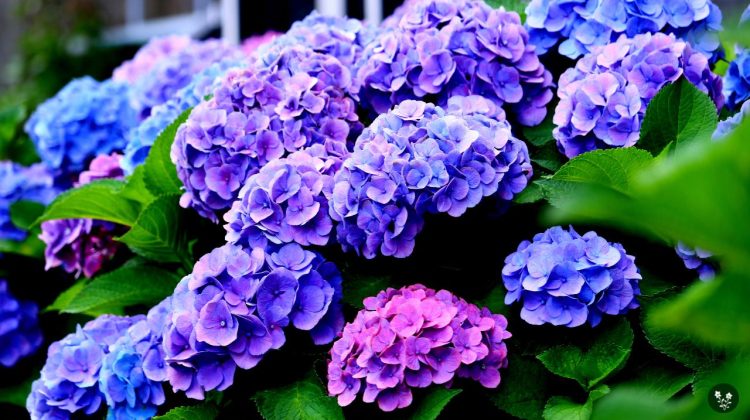
Hydrangeas are popular flowering plants known for their large, vibrant blooms, which come in various colors.
These stunning flowers have been admired for centuries and have developed a rich symbolism in different cultures.
The meaning and symbolism of hydrangeas can vary depending on their color, making them versatile additions to any bouquet, garden, or floral arrangement.
Originally native to eastern Asia, hydrangeas have made their way worldwide and have become a staple in many gardens and floral displays. Their symbolism carries themes of heartfelt emotions, gratitude, and apology, among others.
In Japanese legend, hydrangeas are associated with understanding, appreciation, and the expression of regret.
The various colors of hydrangeas add their unique meanings, with white symbolizing arrogance or vanity and blue conveying a sense of apology and forgiveness.
As you can see, the diverse array of messages conveyed by hydrangeas makes them a thoughtful and interesting subject in the world of floral meanings.
In this article, we'll cover
1. History of the Hydrangea
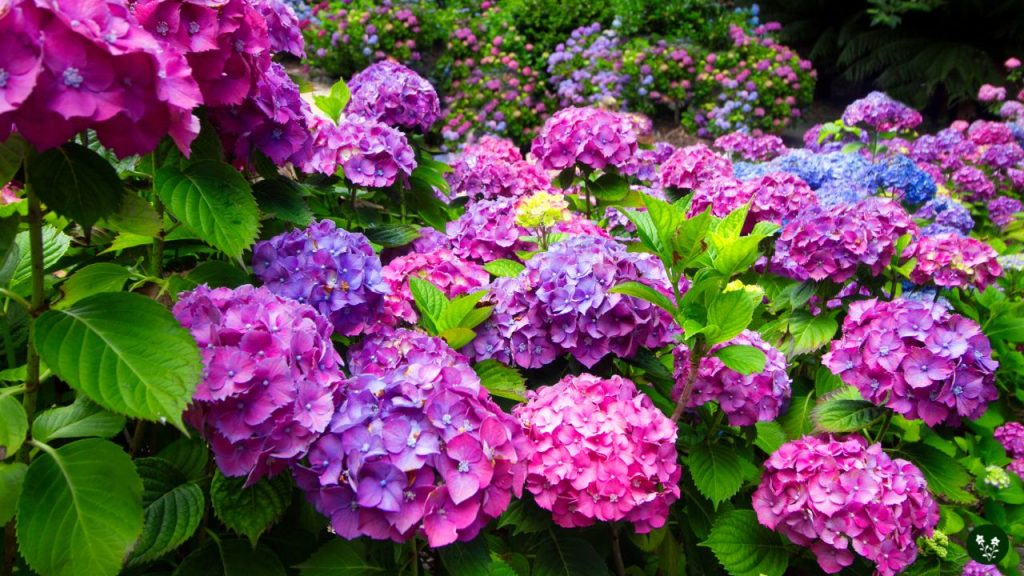
Origins
The etymological meaning of “hydrangea” stems from the Greek words for water (hydros) and jar (angos).
Hydrangeas were given this name due to their need for ample water and the shape of their seed capsules, which resemble jars or urns.
The name “Hydrangea” also has Latin origins dating back to 1739, named by botanist Grovonius.
Spread and Popularity
Hydrangeas have become popular throughout different cultures and regions. In ancient Arabic traditions, the flowers symbolize affection and happiness.
Over time, the hydrangea has gained popularity in gardens and as an ornamental plant worldwide. The wide range of colors and large blossoms make them attractive for gardeners and floral arrangements.
The spread of hydrangeas can be attributed to their adaptability and the variety of species available.
These beautiful plants can be found in various regions across the globe, including Asia, Europe, and the Americas.
Due to this diversity, hydrangeas can thrive in various climates and soil conditions, further solidifying their popularity in gardens and landscapes.
In addition to their allure and adaptability, hydrangeas also hold cultural significance in some countries. For example, in Japan, the hydrangea represents gratitude and apologies, making the flower a popular gift.
With their rich history, diverse species, and wide-ranging symbolism, hydrangeas continue to captivate and enchant people worldwide.
2. Hydrangea Symbolism and Cultural Significance
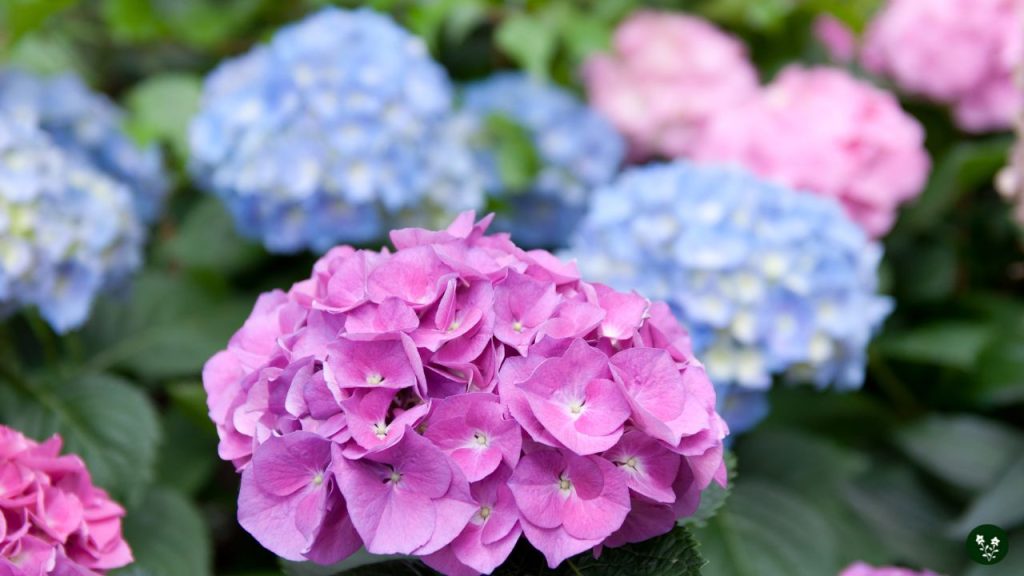
Japan
In Japan, hydrangeas hold a special significance, as they are associated with the rainy season and gratitude.
The availability of blue hydrangeas, in particular, is linked with feelings of apology due to a popular Japanese legend about a heartfelt apology from the emperor to a maiden he loved.
This connection makes blue hydrangeas a common gift for expressing apologies or sincere gratitude in Japan.
Victorian Era
During the Victorian era, the language of flowers was an important method of expressing emotions and sentiments. Hydrangeas had various meanings during this time, depending on the color.
Victorian society placed great importance on selecting the appropriate flowers for every occasion, and hydrangeas played a significant role in conveying meaningful messages across various social settings.
Other Cultures
Many cultures and traditions throughout history have embraced the beauty of hydrangeas and assigned their symbolic meanings.
In ancient Arabic culture, hydrangeas were thought to symbolize affection and happiness. Some even consider hydrangeas a symbol of resilience, as they can endure challenging climates and bloom beautifully.
Today, hydrangeas are popular in floral arrangements and garden designs worldwide. Their vibrant colors and versatility in bloom shape and size make them a universal symbol of beauty and enduring grace.
3. Hydrangea Colors and Their Meanings
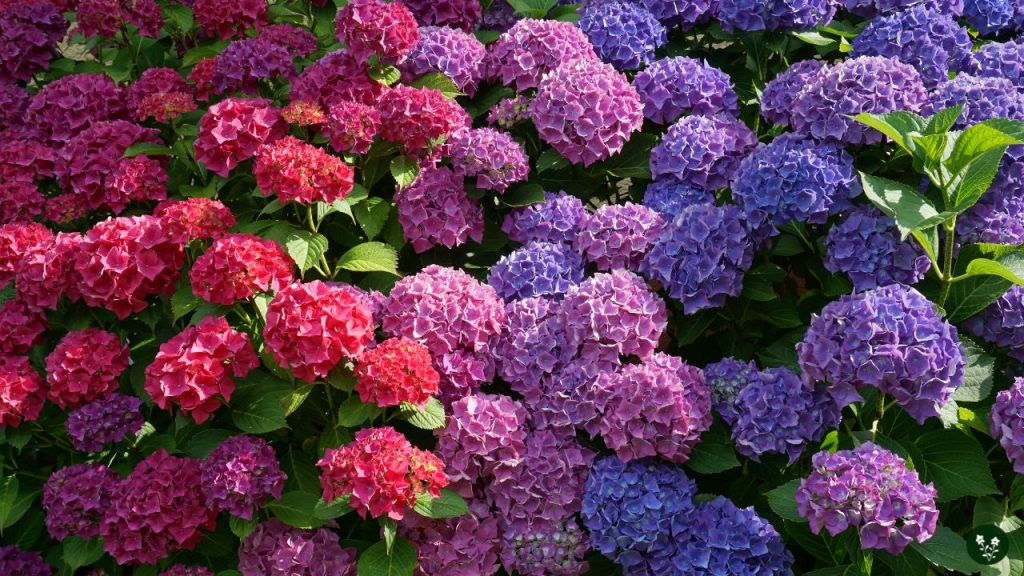
Blue Hydrangea
Blue hydrangeas symbolize apology, regret, and forgiveness. They make a suitable gift when looking to make amends with a loved one or expressing sincere emotions of remorse.
Purple Hydrangea
Purple hydrangeas are often associated with mystery, understanding, and spirituality. They can also symbolize wealth and royalty due to their rich, regal hue.
Pink Hydrangea
Pink hydrangeas represent heartfelt emotions, appreciation, and gratitude. They make an excellent choice for expressing love or admiration towards someone special or simply showing appreciation for a kind gesture.
White Hydrangea
White hydrangeas symbolize purity, grace, and elegance. They are popular for weddings and other formal events, conveying a sense of timeless beauty and sophistication.
Green Hydrangea
Green hydrangeas signify renewal, rebirth, prosperity, good fortune, and youthfulness. These flowers can represent good health and are ideal for expressing well-wishes or celebrating new beginnings.
Yellow Hydrangea
Yellow hydrangeas can bring warmth, joy, and happiness, symbolizing the power of friendship, loyalty, and sunshine. They make a cheerful gift to brighten someone’s day or celebrate a cherished friendship.
4. Hydrangea Uses and Applications
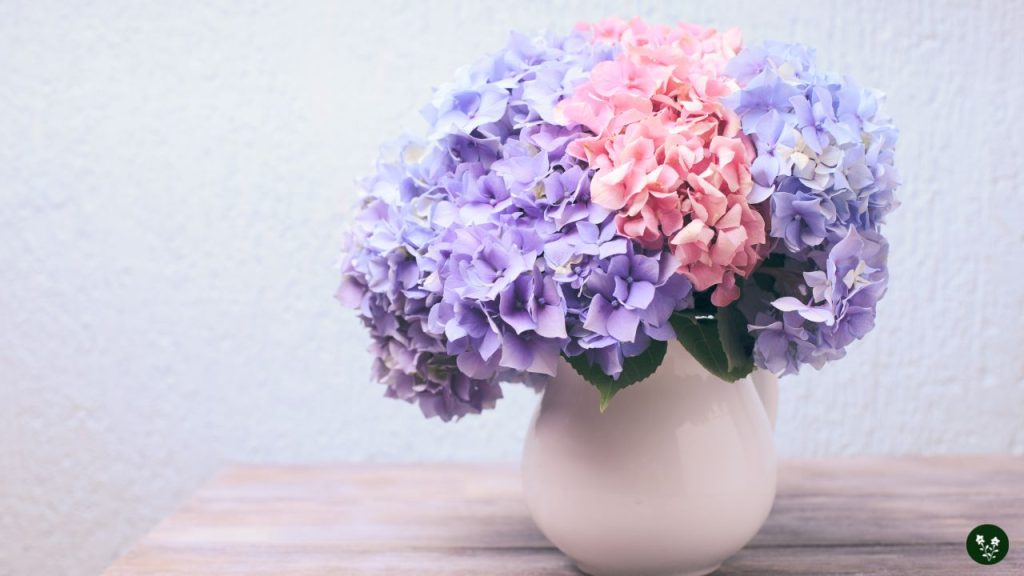
Landscaping
Hydrangeas are widely used in landscaping due to their stunning, full blooms that add color and visual interest to various outdoor spaces. They are versatile plants that can be grown as shrubs, hedges, or containers.
The versatility of these plants makes them suitable for different garden styles, from traditional to contemporary.
Moreover, they are relatively easy to care for, requiring only regular pruning and watering to maintain their health and appearance.
Floral Arrangements
Due to their striking beauty and large blooms, hydrangeas are often used in floral arrangements. They make excellent focal points in bouquets and centerpieces, adding a touch of elegance and charm to any setting.
Hydrangeas can symbolize heartfelt emotions, gratitude, and understanding when used in arrangements.
Their wide range of colors allows them to coordinate easily with other flowers, creating stunning combinations for any occasion.
Gifts and Celebrations
Hydrangeas can also be used as gifts and for various celebrations. Their symbolism of heartfelt emotions and gratitude makes them suitable for expressing appreciation or as thoughtful, meaningful presents.
For example, giving a potted hydrangea plant as a housewarming gift can symbolize well-wishes for the new home and its occupants.
Similarly, hydrangeas can be incorporated into wedding decor as centerpieces or bridal bouquets, symbolizing the love and understanding between the couple.
Hydrangeas serve various practical and aesthetic roles in landscaping, floral arrangements, and celebrations. Their beauty, versatility, and meaningful symbolism make them popular for various applications.
Discover the captivating world of flower meaning:
Leave a Reply